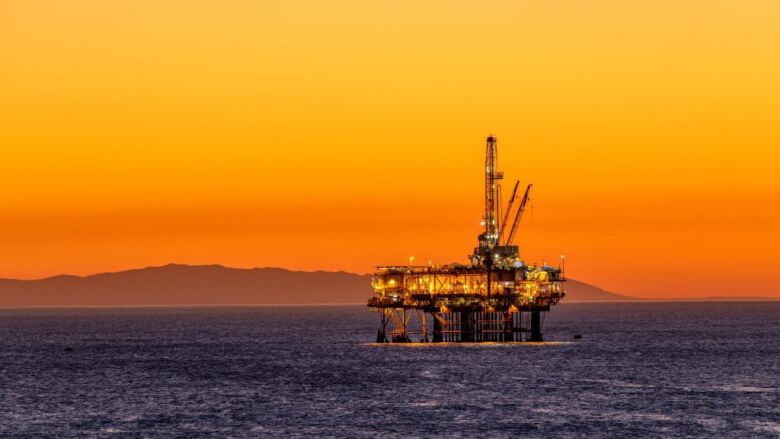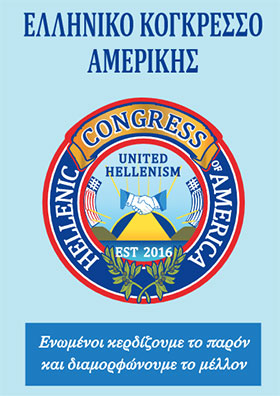Chevron: What’s behind the trilogy of hydrocarbon exploration in Crete and Peloponnese

The broader plan for hydrocarbon exploration and extraction focused on Crete as a result of intense geopolitical processes, with strong support from the US, is presaged by the triple entry of Chevron into Greece.
The stormy developments that are expected to continue as well-informed sources say, pointing towards the Crete-Cyprus-Israel power cable project, are confirmed by yesterday’s announcement by Ministry of Environment and Energy, according to which the US company, in addition to the request for the plot south of the Peloponnese at the beginning of the year, expressed its interest in two more plots south of Crete 1 and south of Crete 2. These are maritime blocks, which are located within the boundaries of the areas published by the Greek government in the 2014 international tender.
It is amply demonstrated that the US company had from the outset expressed interest in the concessions in the sea areas south of Crete that border the concessions of ExxonMobil southwest and southeast of Crete.
But it seems that for geopolitical reasons it was then decided by the Greek government to announce the first part of the entry of the second largest US fossil fuel company into Greece, which was formalized by a request submitted to the Ministry of Environment and Energy in January and accepted by former minister Theodoros Skylakakis for exploration south of the Peloponnese.
Marathon
The marathon of diplomatic contacts that has been going on in recent weeks and is linked to the sensitive issues of Ankara‘s management of challenges in the Aegean Sea and the forging of strong alliances to deal with possible tensions over the Crete-Cyprus power cable issue, seems to be linked to the hydrocarbons case as well.
The reason is that Chevron’s blocks of interest lie within the boundaries of the illegal Turkish-Libyan memorandum part of which is claimed by Libya. Something that understandably could not be overlooked if the right conditions were not in place, as Turkey is relying on it to claim rights to the south of Kasos, obstructing for months the seabed surveys for the Crete-Cyprus-Israel electrical interconnection cable.
Competent sources say that Libya has also recently kept the balance in the region without violating the “middle line” with Greece, putting 22 maritime land plots up for concession.
The fact that Chevron’s interest in the two plots of land south of Crete was formalized yesterday (indeed, a full 24 hours after President Trump’s rave statements of the Greek-American alliance and the strong ties between America and Greece) is a strong indication of recognition of the Greek EEZ (Exclusive Economic Zone) but also that the corridors of cooperation between the two countries can be transformed into strong energy alliances for which US hydrocarbon giants are paving the way.
The latter are in Greece with the aim of controlling a total area of 47,000 kilometers, dramatically increasing the marine areas they include in their portfolio for exploration.
Next moves
The relevant ministerial decisions will be followed by the Ministry of Environment and Energy, accepting the request, identifying the geographical areas, selecting the type of contract and approving the text of the tender notice.
Yesterday there was close cooperation between Environment and Energy Minister Stavros Papastavrou and the managing director of the Greek Hydrocarbons and Energy Resources Management Company Aristophanes Stefatos, who was given special mention in the Ministry of Environment and Energy’s announcement for his contribution to the development of the project.
From now on, the possibility of a tender for all four concessions is reportedly being considered to speed up the procedures.
With developments taking shape, the company’s interest is focused on a total of three areas, one in the south of Peloponnese that was announced in January 2025 and two in the south of Crete, where the company aspires to take over the management of exploration in a total of about 46,000 square kilometres.
This gives Chevron a head start in terms of the area of land under management, with ExxonMobil following it with 35,655 sq km, Helleniq Energy with 8,564 sq km,. and Energean with 2,414 sq km.
This is therefore an overall doubling of the active marine areas to be explored, which significantly increases the chances of discovering domestic natural gas deposits.
Presumably, due to this development, the publication of the first tender in the Official Gazette south of the Peloponnese, which was announced 25 days ago, was also frozen.
Commenting on the developments, competent sources of the Ministry of Environment stressed that the presence and competitive positioning of the two largest private energy companies in the world (ExxonMobil & Chevron) brings Greece to the global forefront of potential new markets.
Exploration Upgrade
This development, as they estimate, is expected to initiate a series of positive developments such as the qualitative upgrade of exploration programs, the maintenance of the intensive exploration rates of the previous recent years, the enrichment of geological models and scenarios for the evolution of the region with the prospect of increasing the potential targets of interest. In addition, the increase in the funds available for deep water drilling and thus significantly improving the chances of identifying any hydrocarbon reserves, attracting new investors or making new commercial agreements.
It should be noted that exploration activity in the Eastern Mediterranean is constantly increasing, as evidenced by ExxonMobil’s most recent natural gas discovery in Egypt, as well as the commencement of exploratory drilling in Block 5 in Cyprus.
Until recently, the Minister of Environment and Energy, Theodore Skylakakis, welcomed Chevron’s interest in the land south of Crete yesterday from Parliament: “We need a realistic policy. And that is what our government is following. A short while ago Chevron’s interest in the land south of Crete was announced. It is an effort that we have been making for many months and I am pleased to see that with the new leadership of the Ministry of Environment and Energy it is now time to announce it.”
Written by E. Tsiliopoulos
Link: https://www.newgreektv.com/news-in-english-for-greeks/greece/item/37415-chevron-what-s-behind-the-trilogy-of-hydrocarbon-exploration-in-crete-and-the-peloponnese










Σχόλια Facebook